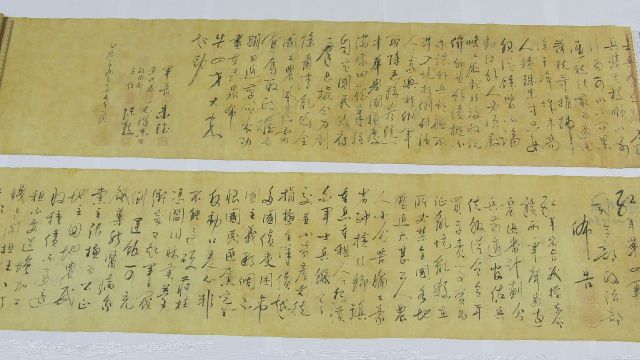The scroll was found damaged when police arrested a 49-year-old man in late September on suspicion of handling stolen property in Hong Kong.
The South China Morning Post, quoting an unidentified police source, reported that the scroll was cut in two by a buyer who had purchased it for 500 Hong Kong dollars (£50) and had believed the scroll to be counterfeit.
Tony Ho, senior superintendent of the police Organised Crime and Triad Bureau, said: “According to our investigation, someone thought that the calligraphy was too long.
“It was difficult to show it, to display it, and that’s why it was cut in half.”
Police said the scroll was part of a high-value theft by three burglars from collector Fu Chunxiao’s apartment in September.
Mr Fu, who is well known for his collection of stamps and revolutionary art, was in mainland China at the time of the burglary and has not been in Hong Kong since January because of the coronavirus pandemic.
The burglars took 24,000 Chinese postage stamps, 10 coins and seven calligraphy scrolls from Mr Fu’s apartment, where he stored his collections.
He estimated that the Mao calligraphy was worth about 300 million dollars (£230 million) and that the theft totalled about 645 million dollars (£500 million), although no independent appraisals of the collections were available.
Police have arrested three men in relation to the burglary and on suspicion of providing assistance to criminals and at least two people connected to the burglary are still at large, Mr Ho said.
Although some of the stolen items have been found, the 24,000 stamps and six other calligraphy scrolls have not been recovered, police said.







